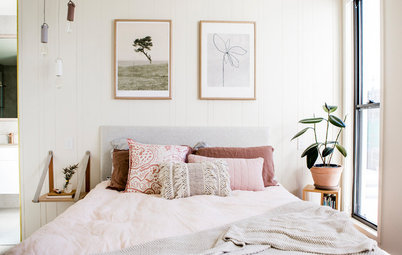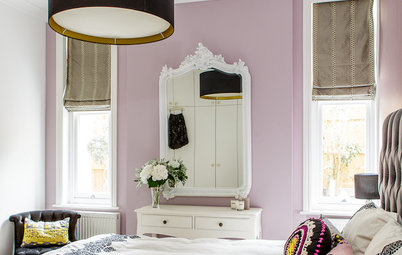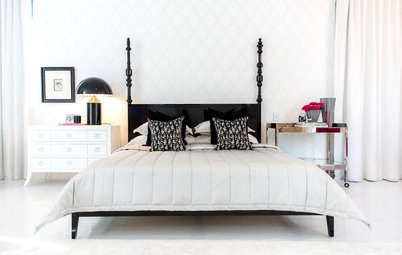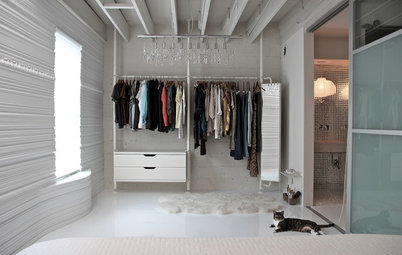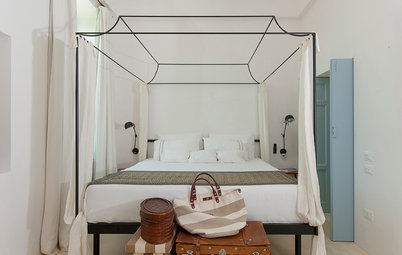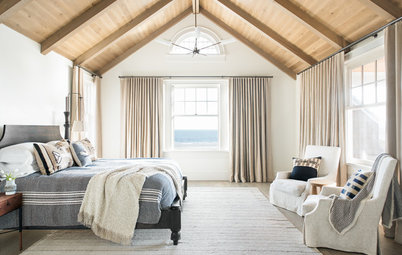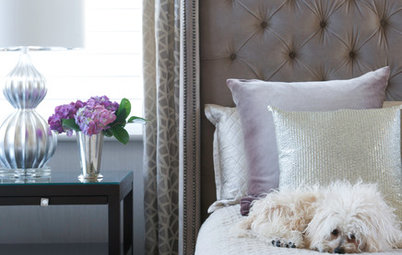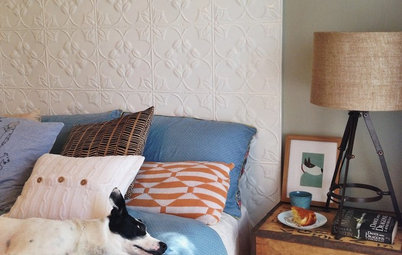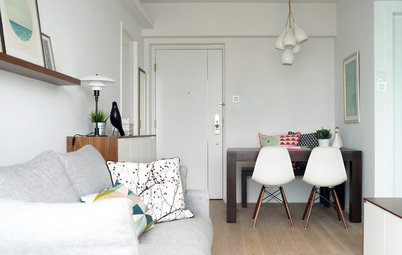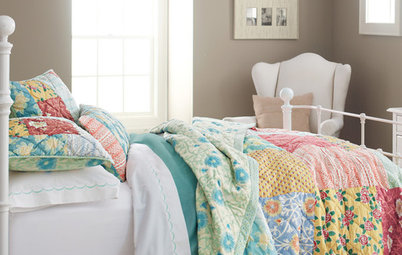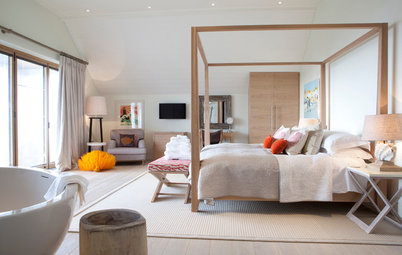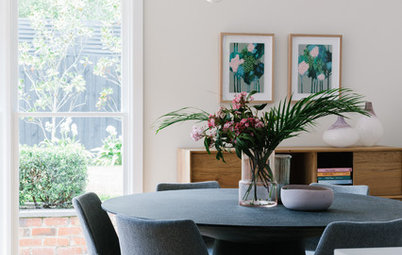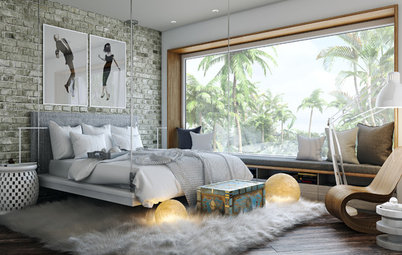Put it to Bed: Could You and Your Partner Sleep Separately?
Real couples tell us why different beds, rooms and unconventional sleeping arrangements work for them
If you haven’t experienced one of these common scenarios yourself, most of us know someone who has: he likes space to stretch out and kicks the sheets off, his partner wants to cuddle and pull up an extra blanket. She’s a light sleeper, her other half snores. He gets gassy, his partner wakes up fuming. She gets up throughout the night to feed the baby, her spouse starts work before the sun rises. These reasons and others have propelled couples into separate beds and different rooms – with many a happy ending – and according to The Australian newspaper, one in four couples now sleep apart.
Historically, having separate bed chambers was a symbol of wealth – just think of the opulent sleeping quarters of long departed nobility or today’s Queen Elizabeth II and Prince Philip. The upper classes in the western world also considered it downright improper for a respectable couple to share a room, let alone a bed. The aristocracy dared not stoop to such an uncivilised state – they left that to the working classes, who often could not afford a second bed chamber and had children and parents piled onto one mattress (a scenario that many parents of young children will find all too familiar).
This social current continued into the 20th century. In fact, from 1930 to 1968 the Motion Picture Production Code (also known as the Hays Code) warned American films against depicting a man and a woman in the same bed, lest such a scandalous act debase the audience’s delicate sense of morality. During this time it was common for married couples to choose twin beds.
But these days, the tide has turned and the vast majority of couples sleep side-by-side. We barely blink when people build ‘his’ and ‘hers’ sinks, a second bathroom, separate wardrobes and man caves if space and budgets permit. However, seeds of doubt about perfectly strong relationships can spread like weeds when people discover that a couple does not share a bed. “I think lots of people do like their own space but not many people discuss it,” reveals one Houzz user whose partner sleeps in a separate room, explaining that it’s often “a bit of a taboo subject”.
But these days, the tide has turned and the vast majority of couples sleep side-by-side. We barely blink when people build ‘his’ and ‘hers’ sinks, a second bathroom, separate wardrobes and man caves if space and budgets permit. However, seeds of doubt about perfectly strong relationships can spread like weeds when people discover that a couple does not share a bed. “I think lots of people do like their own space but not many people discuss it,” reveals one Houzz user whose partner sleeps in a separate room, explaining that it’s often “a bit of a taboo subject”.
In an informal 2015 poll Houzz Australia asked its online community whether shared or separate bedrooms were better, and the answers are illuminating.
“I like my husband! We share a lot of our thoughts and solve a lot of problems in our nightly pillow talk. I feel it reinforces our bond,” writes one Houzz user. “Definitely sleep together. Why live together if you don’t sleep together?” asks another.
“I like my husband! We share a lot of our thoughts and solve a lot of problems in our nightly pillow talk. I feel it reinforces our bond,” writes one Houzz user. “Definitely sleep together. Why live together if you don’t sleep together?” asks another.
But some couples find the compatibility they enjoy by day dissolves into incompatibility at night. “I like to read in bed, he likes to watch TV in bed; I’m up late, he’s up early; I’m hot, he’s reaching for the extra blanket; I’m a light sleeper, he’s a snorer. Do we sleep in separate rooms? Hell yes. But let’s not confuse sleep with affection or intimacy. Besides, conjugal visits are highly encouraged,” one Houzz user writes.
And herein lies the crux: being in the same bed and being intimate are too often conflated. One has become symbolic of the other, even though many couples still enjoy a strong intimate bond despite different beds, rooms and homes – remember the passion before you moved in together?
“We have two master bedrooms in our home as my husband has a sleep disorder,” writes one Houzz user. “It works very well as we both designed our own spaces and have different sleeping needs, leaving time together more like dating with more respect for each other. I would recommend this set-up for every home.”
“We have two master bedrooms in our home as my husband has a sleep disorder,” writes one Houzz user. “It works very well as we both designed our own spaces and have different sleeping needs, leaving time together more like dating with more respect for each other. I would recommend this set-up for every home.”
It is this set-up that graces the top level of a residence in Rose Bay, Sydney, shared by a married couple and their two sons. Designed by Tony Legge of Legge & Legge Architects with interiors by Woods & Warner, the top floor houses ‘his’ and ‘hers’ master bedrooms – each with its own ensuite – and a spacious office connected to the husband’s room, pictured here. In a touching architectural gesture, a bridge connects the two wings – a design which is evocative of the neighbouring homes shared by Mexican artists Frida Kahlo and Diego Rivera.
“Having [their] own space meant there were no compromises with colour palettes or finishes,” says Jacinta Woods of interior design firm Woods & Warner. “Each has a mid-century influence, while having their own distinctive male and female design schemes.”
“Having [their] own space meant there were no compromises with colour palettes or finishes,” says Jacinta Woods of interior design firm Woods & Warner. “Each has a mid-century influence, while having their own distinctive male and female design schemes.”
Being able to indulge their distinctive tastes was a luxury made possible by having dual master suites. Glance at the couple’s bedrooms and ensuites and you’ll immediately see the contrast in their styles, colour palettes and finishes.
Here, the masculine master ensuite with its striking ceiling-mounted showerhead is finished with smoke-toned tiles that hark back to those charcoal curtains and the grey accent wall in ‘his’ master bedroom. The overall effect lends these spaces a solemn, masculine atmosphere.
Here, the masculine master ensuite with its striking ceiling-mounted showerhead is finished with smoke-toned tiles that hark back to those charcoal curtains and the grey accent wall in ‘his’ master bedroom. The overall effect lends these spaces a solemn, masculine atmosphere.
In contrast, ‘her’ master bedroom embodies a bright, feminine ambience. Here, diaphanous white curtains, light walls and layers of pearly finishes and furnishings conjure a more airy, feminine feel.
This colour scheme is continued in the feminine master ensuite, where a freestanding stone bath takes pride of place instead of a shower, and where a sparkling chandelier hangs in stark contrast to the heavier metal pendant light seen in ‘his’ bedroom.
Take a virtual tour of this home
Take a virtual tour of this home
This Sydney duo is not alone. In Oregon, USA, a retired couple living the dream on their cattle ranch opts to sleep in separate rooms, which are decorated according to their different tastes. Here you can see his bedroom…
… and this one is hers. These separate master bedrooms are linked by a bathroom, with a tub that is exclusively used by the lady of the house.
Across the pond, Houzz UK also conducted a poll in 2015, asking respondents whether they sleep together, in separate beds, different rooms or have other arrangements. The results ranged from hilarious to heartbreaking and perhaps the best conclusion we can draw is that there is no norm.
“How could I kick him when he snores if we had separate beds in the same room!” one Houzz user comments.
“We have separate rooms,” writes another. “I read, watch telly, get up early, will often read in the middle of the night. This would disturb my other half. Also he moans that I snore (but so does he!). My dog sleeps on my bed – so no room for the other half anyway.”
“We have separate rooms,” writes another. “I read, watch telly, get up early, will often read in the middle of the night. This would disturb my other half. Also he moans that I snore (but so does he!). My dog sleeps on my bed – so no room for the other half anyway.”
While many couples enjoy having separate beds or rooms to retreat to, some are reluctantly forced to sleep separately.
“A king size with two mattresses is ideal, you can still snuggle but you are not disturbed by your partner tossing about,” shares one user. “Snuggle while you can, my husband is now severely disabled and cannot now sleep in our bed and I so miss snuggling up to him.”
Browse more beautiful bedrooms
“A king size with two mattresses is ideal, you can still snuggle but you are not disturbed by your partner tossing about,” shares one user. “Snuggle while you can, my husband is now severely disabled and cannot now sleep in our bed and I so miss snuggling up to him.”
Browse more beautiful bedrooms
Some couples who suffer from the dreaded doona hogging found a solution by switching to individual blankets on the same bed. Others pushed two mattresses side-by-side, which mitigated the movement caused when one person was found guilty of tossing and turning at all hours.
Part-time sleeping arrangements also featured, with one Houzz user explaining that she and her partner are “currently spending a couple of nights a week in separate rooms because of husband’s bad snoring, which helps me catch up on sleep. I still like to snuggle but am considering a full-time move, as this sleep deprivation is driving me nuts!”
And still others have come up with creative new arrangements to accommodate the needs of other family members and not just themselves as a couple. One couple temporarily pushed two queen-sized beds together to make room for their young twins.
And still others have come up with creative new arrangements to accommodate the needs of other family members and not just themselves as a couple. One couple temporarily pushed two queen-sized beds together to make room for their young twins.
“I think couples probably sleep better when there is no disturbance from a partner, but I do think it is important not to make it a permanent arrangement as you lose that lovely close contact and the intimacy of snuggling – I think this is very important in our busy lives,” writes another Houzzer.
And this, perhaps, is the ultimate question: how do we balance our divergent needs for contact, space, intimacy and sleep in a way that both partners feel fulfilled? The answer, of course, is different for everyone.
Tell us
How do you sleep and what’s your ideal arrangement? Like, share and bookmark this story and join the conversation.
More
Read more lifestyle stories that will get you thinking
And this, perhaps, is the ultimate question: how do we balance our divergent needs for contact, space, intimacy and sleep in a way that both partners feel fulfilled? The answer, of course, is different for everyone.
Tell us
How do you sleep and what’s your ideal arrangement? Like, share and bookmark this story and join the conversation.
More
Read more lifestyle stories that will get you thinking



